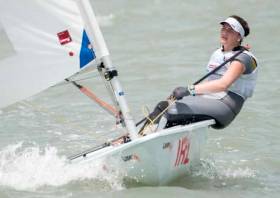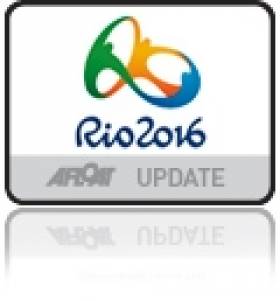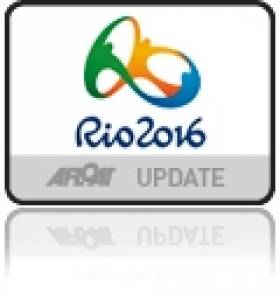Displaying items by tag: kiel
The Ocean Race Europe 2025 Will Start From Kiel in Germany
Organisers of The Ocean Race have confirmed Kiel.Sailing.City as the host of the start of The Ocean Race Europe during a press conference in Kiel on Wednesday morning (14 February).
The second edition of the European race, which was confirmed last summer, is scheduled to start on 10 August 2025 and finish in the Mediterranean some six weeks later. More host city announcements are anticipated this spring.
Previously, Kiel was the finish port of the Volvo Ocean Race 2001-02 and last year the German city hosted a hugely successful ‘Fly-By’ on the penultimate leg of The Ocean Race 2022-23.
Team Malizia and Team Holcim-PRB have both confirmed their intention to be on the starting line in Kiel next year.
For Boris Herrmann, the German skipper of Team Malizia, the Fly-By in Kiel last summer was a highlight of The Ocean Race. Now he says he is looking forward to starting The Ocean Race Europe from
“Kiel feels like home to me and I grew up sailing here over the years,” said Malizia skipper Boris Herrmann. “For me and Team Malizia this is a great announcement and we can’t wait to compete in the race!”
Joining via video-link from Holcim HQ in Switzerland, Rosalin ‘Rosie’ Kuiper — who joined Team Holcim-PRB after racing around the world with Team Malizia last year — said: “Germany is such a big part of The Ocean Race and remembering the crowds who came out to support us on Malizia for the Fly-By in Kiel is amazing, so to hear we will be starting from Kiel is great news.
“Later this year we will start our crew selection process for the new team and I hope to be on the starting line in 2025 with a happy, strong, diverse team so that Boris will tap me on the shoulder and say, ’nice job’!”
 Speakers and guests take an opportunity to pose with Nature’s Baton at the announcement of Kiel as the start port for The Ocean Race Europe 2025 | Credit: Rachel Eismann/Kiel-Marketing
Speakers and guests take an opportunity to pose with Nature’s Baton at the announcement of Kiel as the start port for The Ocean Race Europe 2025 | Credit: Rachel Eismann/Kiel-Marketing
The Ocean Race chairman Richard Brisius said that starting the second edition of The Ocean Race Europe from Kiel “is an opportunity to demonstrate the power of sport to connect us and serve a larger purpose”.
Brisius added: “I have no doubt that the cutting-edge, foiling IMOCA boats and the extraordinary women and men who sail them will produce an exceptional race on the water and an incredible experience for race fans in Kiel, a two-time host of sailing at the Olympic Games and a city whose Kiel Week regatta has become world-renowned as the home of the largest sailing event in Europe.
“But we are determined for The Ocean Race Europe to be more than a great sailing race. All of us here today are firm in our belief that we are in a race for the ocean, that the restoration of ocean health is key to life on our planet.”
To that end, Brisius said, initiatives around The Ocean Race Europe will support learning programmes for race fans and school children, while its onboard science programme will collect data from the race boats for experts to analyse “as they continue to learn about the changes taking place in our waters, from the Baltic Sea in northern Europe to the Mediterranean in the south”.
Staunton Leading Irish At Laser Radial Youth Worlds In Kiel
#Laser - A 12-strong team is representing Ireland at the Laser Radial Youth Worlds in Kiel, Germany which kicked off over the weekend.
Best of the bunch thus far is Nell Staunton of the National Yacht Club, fresh off her eight-place finish in last month’s Youth Sailing Worlds in the US, who stands in 18th place in the girl’s division on 23 points after two races.
Clare Gorman, also of the NYC and the only other Irish girl in Kiel, is in 67th after a black flag in her first race.
Leading the Irish contingent in the boys’ division is Hugo Kennedy (Royal St George), who holds 32nd place on the leaderboard on 22 points after two races.
Geoff Power (Waterford Harbour; 47th) and Tom Higgins (RStGYC; 49th) are the closest Irish boys, with Toby Hudson-Fowler (RStGYC) in 81st despite an impressive eight-point score in his second race; Dan McGaughey (Donaghadee SC) 132nd; Peter Fagan (Skerries SC) 138th; Henry Higgins (RStGYC) 148th; Jack Fahy (Lough Derg YC) 178th and Paddy Cunnane (Dingle SC) trailing at 207th with a disqualification in his first race.
Those struggling down the table have four more qualifiers to go before the big fleet races later this week.
#49er – A credible top ten performance at Kiel week this week for Northern Ireland's 49er pairing Ryan Seaton and Matt McGovern marks another auspicious step on the ladder for Rio 2016, given this is only the dinghy pairs second regatta since returning from London 2012.
This week's German result follows Sail for Gold victory in Weymouth a fortnight ago and positions the Ballyholme duo well for this month's 49er Europeans, the main target of their summer campaign. The pair finished seventh overall in a Kiel fleet of 51–boats, recovering from some mid-fleet performances earlier in the series.
Belfast team mate James Espey did not fare as well in the mens Laser division finishing 60th out of 92 starters.
Tiffany Brien, also from Belfast lough, now teamed with Dubliner Saskia Tidey were 12th from 15 in the brand new 49er fx women's Olympic class. This pair are also heading for a class European championships.
Full results in each class of Irish interest is downloadable below
Irish 49er & 49erFX Crews Back in Action at Kiel Week
#kielewoche – Last week's Olympic classes Sail for Gold Regatta Gold medallists, Northern Ireland's Ryan Seaton and Matt McGovern, are in action again this weekend at Kiel Regatta in Germany.
Racing begins on Saturday with a total of 19 races over five days. The skiff pair pair will have gained confidence from their recent victory but bigger prizes are on the horizon and immediately after Kiel travel to Aarhus in Denmark for the 49er European Championships.
There they will, for the first time since the 2012 Games, compete against a full international 49er 'A fleet'.
Also in action, in the new Olympic 49er FX female class, are Olympic newcomers Tiffany Brien and Saskia Tidey who make their European Championship debut also in Denmark next week.
Fellow Belfast lough sailor James Espey is also in action the Laser class.































































